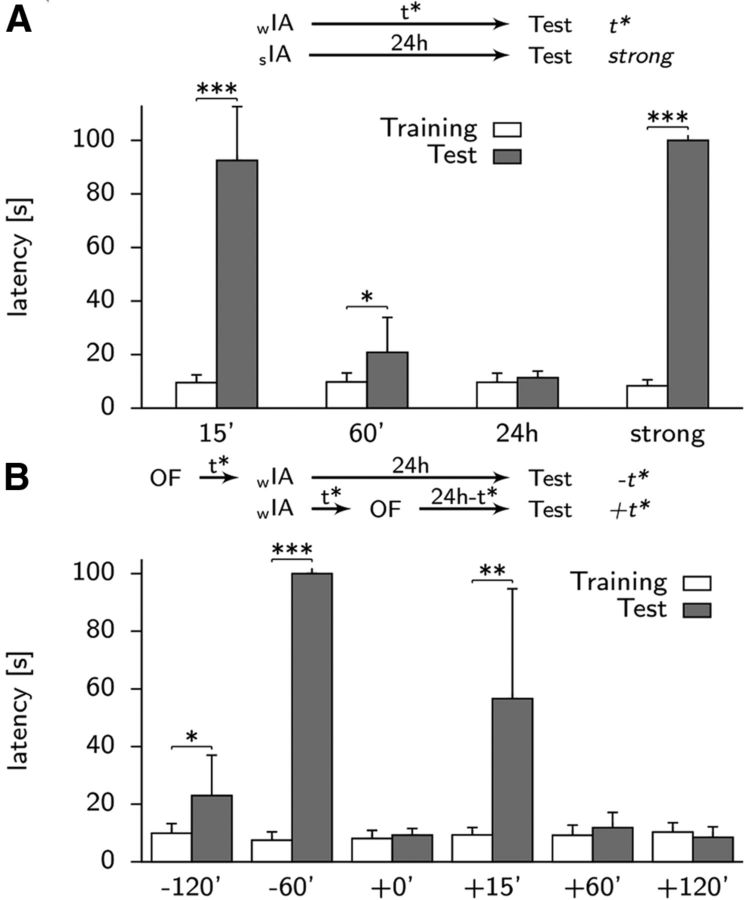Figure 6.
Behavioral simulations results. A, Latencies during inhibitory avoidance training (white boxes) and at different times t* after training (gray boxes, for t* = 15 min, 60 min, 24 h) in the case of a weak foot shock (paired t tests, n = 10; t* = 15, p < 0.001; t* = 60, p = 0.049). A stronger stimulation involving dopamine delivery (strong) is able to rescue the memory trace (p < 0.001), which otherwise has disappeared after t* = 24 h. Error bars show SD. B, Long-term memory can also be rescued by novelty. If an OF setup was applied to the network either before (−t) or after (+t) the fear encoding in a specific time window, the dopamine delivery associated to it could trigger the necessary protein synthesis to consolidate the synaptic connections (paired t tests, n = 10; t = −120, p = 0.028; t = −60, p < 0.001; t = +15, p = 0.004). The hole at t = +0 is due to a reset of previously formed connections during the OF stimulation. Because it happens within the 10 min window when tags were not set yet, the memory trace is totally erased.

